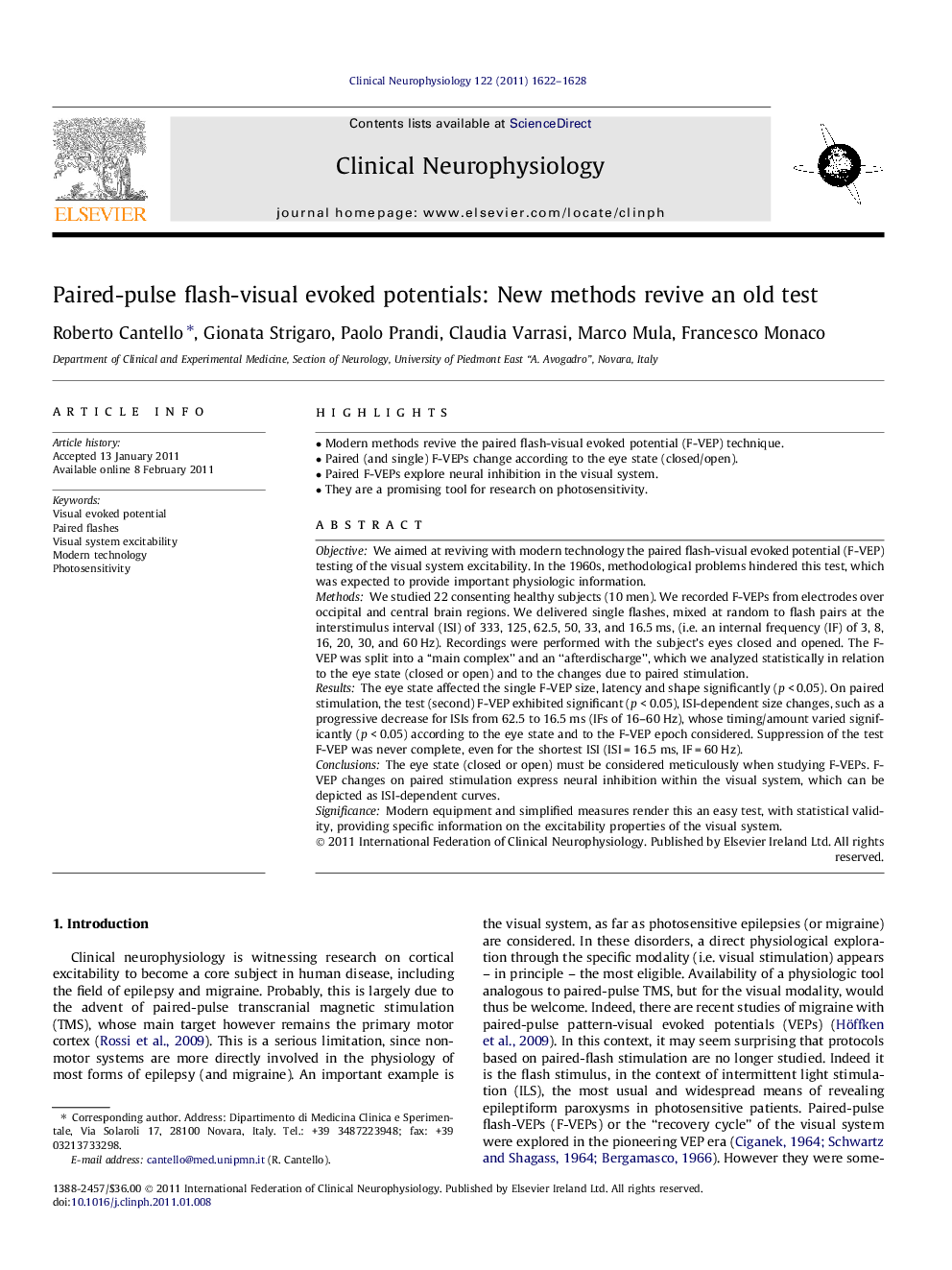| Article ID | Journal | Published Year | Pages | File Type |
|---|---|---|---|---|
| 3044028 | Clinical Neurophysiology | 2011 | 7 Pages |
ObjectiveWe aimed at reviving with modern technology the paired flash-visual evoked potential (F-VEP) testing of the visual system excitability. In the 1960s, methodological problems hindered this test, which was expected to provide important physiologic information.MethodsWe studied 22 consenting healthy subjects (10 men). We recorded F-VEPs from electrodes over occipital and central brain regions. We delivered single flashes, mixed at random to flash pairs at the interstimulus interval (ISI) of 333, 125, 62.5, 50, 33, and 16.5 ms, (i.e. an internal frequency (IF) of 3, 8, 16, 20, 30, and 60 Hz). Recordings were performed with the subject’s eyes closed and opened. The F-VEP was split into a “main complex” and an “afterdischarge”, which we analyzed statistically in relation to the eye state (closed or open) and to the changes due to paired stimulation.ResultsThe eye state affected the single F-VEP size, latency and shape significantly (p < 0.05). On paired stimulation, the test (second) F-VEP exhibited significant (p < 0.05), ISI-dependent size changes, such as a progressive decrease for ISIs from 62.5 to 16.5 ms (IFs of 16–60 Hz), whose timing/amount varied significantly (p < 0.05) according to the eye state and to the F-VEP epoch considered. Suppression of the test F-VEP was never complete, even for the shortest ISI (ISI = 16.5 ms, IF = 60 Hz).ConclusionsThe eye state (closed or open) must be considered meticulously when studying F-VEPs. F-VEP changes on paired stimulation express neural inhibition within the visual system, which can be depicted as ISI-dependent curves.SignificanceModern equipment and simplified measures render this an easy test, with statistical validity, providing specific information on the excitability properties of the visual system.
► Modern methods revive the paired flash-visual evoked potential (F-VEP) technique. ► Paired (and single) F-VEPs change according to the eye state (closed/open). ► Paired F-VEPs explore neural inhibition in the visual system. ► They are a promising tool for research on photosensitivity.
